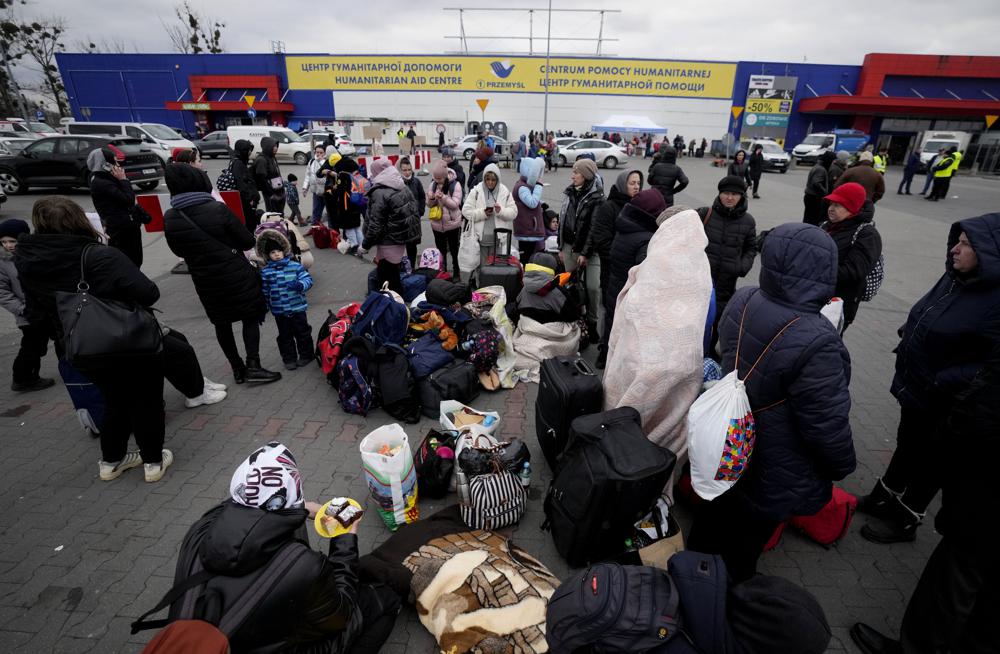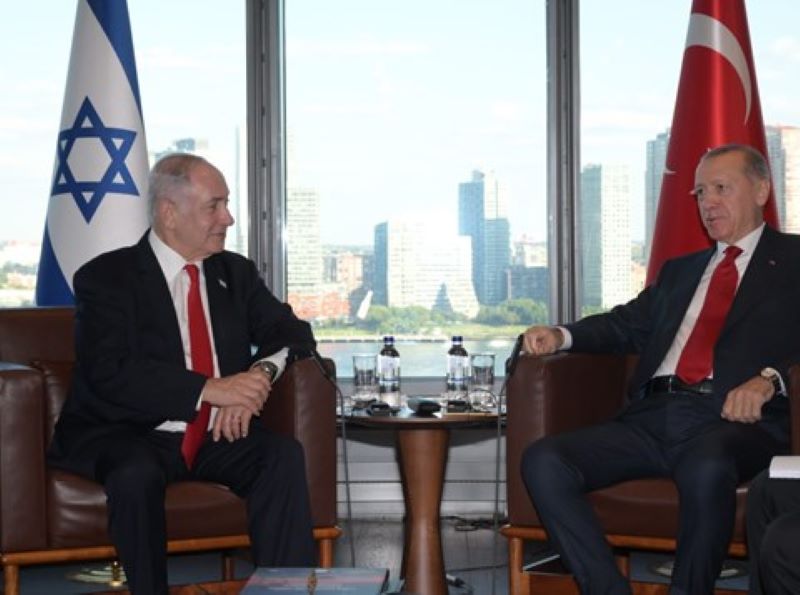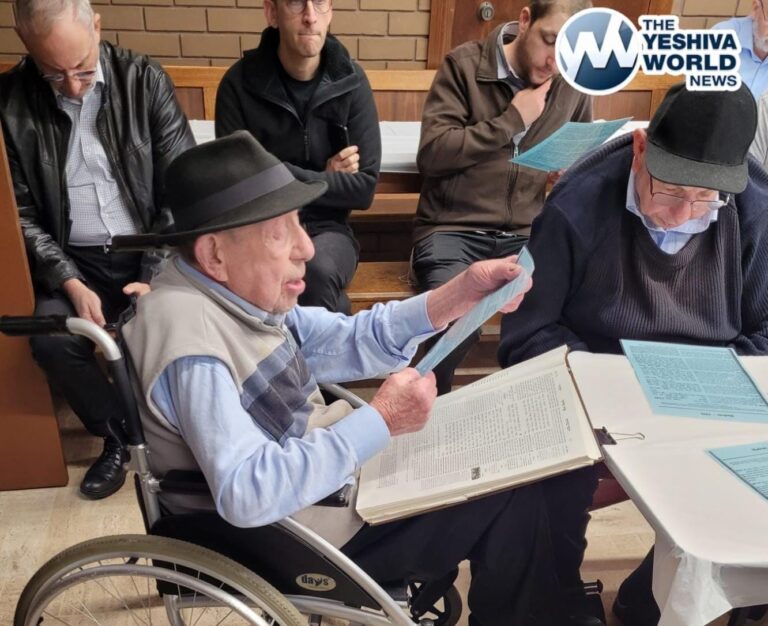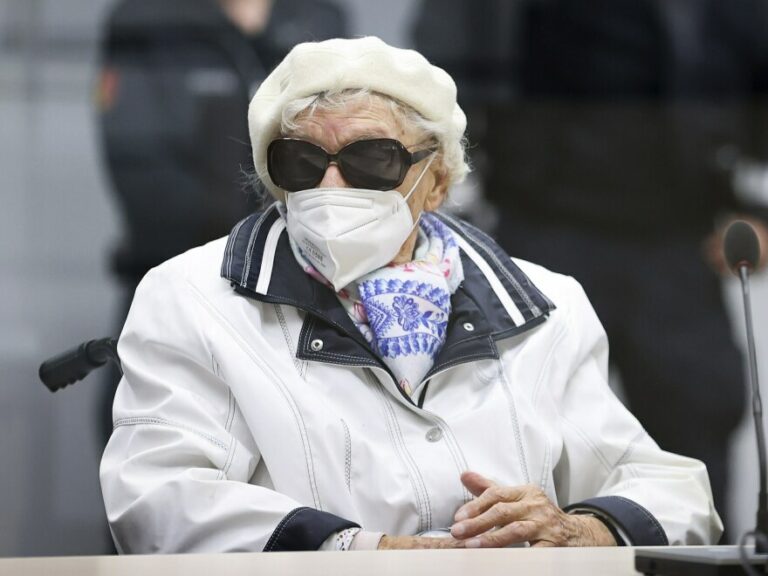Two million people — half of them children — have fled Ukraine in the less than two weeks since Russia invaded the country, officials said Tuesday, as Europe’s worst refugee crisis since World War II grows by the day.
As the cross-border exodus from Ukraine continued, the humanitarian situation in the country’s besieged cities grew more dire, including the port of Mariupol, where bodies lay uncollected in the streets and civilians waited anxiously for word that they’d be allowed to evacuate.
People did manage to leave the northeastern Ukrainian city of Sumy on buses on Tuesday through one of the humanitarian corridors Russia and Ukraine agreed to Monday. But that happened after overnight shelling killed 21 people in the city, according to the Ukrainian officials, as fierce fighting continued around cities in a huge swath of the country, including the capital, Kyiv.
Here’s a look at key things to know about the war:
WHAT HAS BEEN DIRECTLY WITNESSED OR CONFIRMED BY THE ASSOCIATED PRESS?
Videos showed people boarding buses in Sumy on Tuesday and showed buses marked with a red cross driving along a snowy road as they headed out of the city.
Ukrainian Deputy Prime Minister Iryna Vereshchuk said both sides agreed to a cease-fire from 9 a.m. to 9 p.m. for the evacuation of Sumy civilians, who were headed southwest to the Ukrainian city of Poltava.
Earlier, a video from Sumy showed rescuers pulling the wounded out of debris following an overnight airstrike. A woman who was trapped under the rubble survived, according to the Ukrainian Interior Ministry. Rescuers were going through the rubble, using bare hands, flashlights and machines to cut through concrete slabs to reach victims.
Video also showed women and children in Mariupol gathered in a basement shelter as outgoing artillery fire blazed in the distance. One of the women, Goma Janna, lamented, “Why shouldn’t I cry? I want my home, I want my job. I’m so sad about people and about the city, the children.”
Civilians in Mariupol have been without water, heat, sanitary systems and phone service for several days, and many have turned to looting. The video showed a Ukrainian soldier telling people, “People, please be united. You don’t need to panic. Please don’t steal everything. You will live here together.”
Where a small cache of bottled water has been left on a sidewalk, a soldier said it was for women, children and the elderly, and that men should search for water elsewhere.
A group of people huddled around cellphone chargers powered by a generator. With the electricity out, many people are relying on their car radios for information, picking up news from stations broadcast from areas controlled by Russian forces or Russian-backed separatists.
HOW ARE EVACTUATIONS GOING?
The Russian military said 723 people were evacuated from Sumy to Poltava. It identified them as mostly citizens of India, with the rest from China, Jordan and Tunisia. It made no mention of any Ukrainians among those evacuated.
Meanwhile, buses emblazoned with red cross symbols carried water, medicine and food toward Mariupol, where authorities planned to start digging mass graves for all the dead. The plan was for them to then ferry civilians out of the city of 430,000 people, Vereshchuk said.
But soon after officials announced that buses were on their way, Ukrainian officials said they had learned of shelling on the escape route.
It was unclear whether the supply convoy made it to Mariupol or whether any civilians managed to get out. The city’s deputy mayor told the BBC that Russian forces continued to pound areas where people were trying to gather ahead of being evacuated.
Russia said before Monday’s talks with Ukraine that civilians would be allowed safe passage out of several cities, including Sumy, Mariupol, Chernigiv, Kyiv and Kharviv. But it wasn’t clear if evacuations had happened from any of those cities aside from Sumy. Attempts to create safe evacuation corridors have stumbled for days amid continuing fighting and objections to the proposed routes.
Ukrainian officials said a safe corridor did open early Tuesday from Irpin, a city near Kyiv that has been without electricity, water and heat for days. But it wasn’t clear how long it remained open or how many people used it.
Ukrainian President Volodymyr Zelenskyy called for the expansion of humanitarian corridors on Tuesday. In a video address from an undisclosed location, he said a child had died of dehydration in Mariupol, another sign of the city’s desperation.
WHAT ELSE IS HAPPENING ON THE GROUND?
Russian aircraft bombed cities in eastern and central Ukraine overnight, Ukrainian officials said. Shelling pounded Kyiv’s suburbs. Bombs also hit oil depots in two other towns.
The mayor of Lviv said the city in far western Ukraine was struggling to feed and house the more than 200,000 people who have fled there. The displaced are being housed in the city’s sport halls, schools and other buildings.
Nearly two weeks into the fighting, Russian forces have captured a swath of southern and coastal Ukraine but have seen their advances stopped in many areas, including around Kyiv.
HOW MANY PEOPLE HAVE BEEN KILLED?
Thousands of people are thought to have been killed, both civilians and soldiers, though the actual number remains unknown.
The U.N. human rights office said Tuesday that it had confirmed that 474 civilians had died and 861 had been wounded in Ukraine since the Feb. 24 start of the war, though it acknowledged that the actual figures are likely much higher.
The World Health Organization said six health care workers have been killed and nearly a dozen have been wounded in attacks. It has confirmed 16 attacks on health care facilities in Ukraine since Russia’s invasion began.
Ukrainian refugees continue to pour into neighboring countries. Among them are an unknown number of people with U.S. citizenship, though some haven’t been able to flee Ukraine yet.
WHAT IS THE GLOBAL IMPACT?
Surging prices for oil and other vital commodities, such as wheat used in subsidized bread and noodles, are rattling global markets. Worries are growing that Russia’s invasion of Ukraine will upend already tight oil supplies. Russia is one of the world’s largest energy producers.
President Joe Biden announced Tuesday that the U.S. will ban all Russian oil imports, toughening the toll on Russia’s economy in retaliation for its invasion of Ukraine, but he acknowledged it will bring rising costs to Americans, particularly at the gas pump.
The action followed Zelenskyy’s plea to U.S. and Western officials to cut off the imports, which had been a glaring omission in the massive sanctions put in place on Russia over the invasion. Energy exports have kept a steady stream of cash flowing to Russia despite otherwise severe restrictions on its financial sector.
“We will not be part of subsidizing Putin’s war,” Biden declared, calling the new action a “powerful blow” against Russia’s ability to fund the ongoing offensive.
Meanwhile, Chinese President Xi Jinping again criticized sanctions on Russia as “harmful to all sides,” according to a Chinese readout of a video summit Tuesday with the leaders of France and Germany.
Bulgaria said Tuesday it will not support sanctions against Russia that are harmful to its own economy. The country, which is a member of the EU and NATO, is heavily dependent on Russian oil and gas.
A growing number of multinational businesses have cut Russia off from vital financial services in response to Western economic sanctions. The most recent big name brands to suspend services in Russia are Netflix, the popular streaming service, and Estee Lauder, the New York-based cosmetics giant.
Despite countries sending weapons to Ukrainian forces fighting the Russians, Western countries have rejected Ukrainian calls to impose a no-fly zone over the country. There are concerns such a move would risk dramatically escalating the conflict.
(AP)











